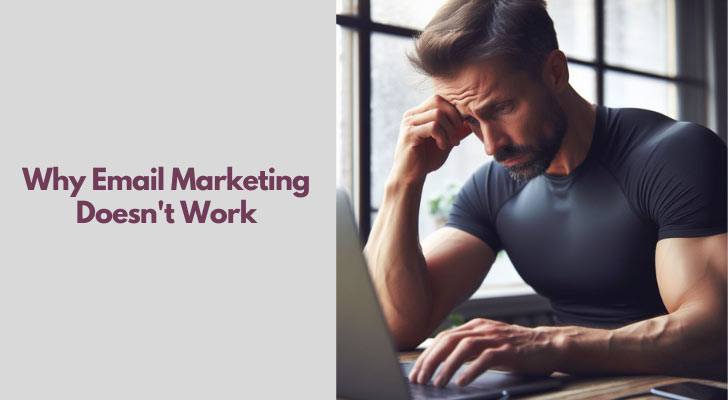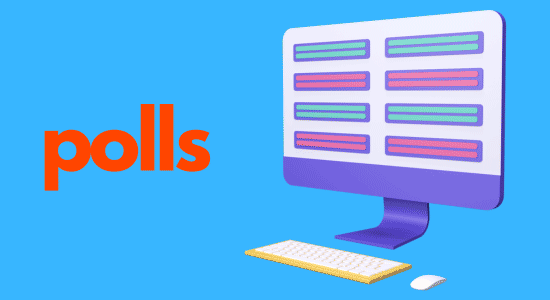Every morning, literally billions of people around the world start their day by sifting through a barrage of emails that have accumulated in their inboxes overnight. Hasn't this ritual become an overwhelming task to you? The sheer volume of messages received daily can be staggering, creating a sense of dread for even the most organized among us.

The Email Deluge
The exponential growth of businesses and services using email as their primary mode of communication has led to an undeniable deluge of messages. These range from personal notes to promotional offers, newsletters, and sometimes, unfortunately, unwanted spam. This inundation has led to several concerns:
Information Overload: With so many messages vying for attention, it's easy for genuinely important emails to get lost in the shuffle. Vital communications from family, work, or health services can be overlooked, leading to missed opportunities or even crucial information.
Decreased Productivity: A significant portion of one's day can be spent just trying to declutter their inbox. This constant need to filter out irrelevant messages takes away from time that could be better spent on productive tasks or creative endeavors.
Stress and Anxiety: The constant influx can cause unnecessary stress. The fear of missing out on a vital piece of information or the anxiety of constantly having to manage a cluttered inbox can be mentally taxing.
The Promotional Avalanche
Businesses, eager to reach potential clients, send out myriad promotional emails. Sometimes, these messages are helpful and wanted. However, more often than not, these emails are perceived as:
Impersonal: Generic marketing emails rarely resonate with their recipients. They lack a personal touch, making the recipient feel more like a number than a valued client or potential customer.
Irrelevant: Not all offers or promotions cater to the interests of every recipient. Receiving offers or news that hold no personal relevance can be off-putting.
Frequent: Some companies have a tendency to send out emails multiple times a day. This frequency can quickly cause frustration among recipients who feel bombarded.
Did You Know?
- Low Open Rates: On average, email marketing open rates hover around 15-25%, indicating that a significant majority of emails remain unopened (Campaign Monitor, 2020).
- Spam Filters: Roughly 20% of emails get trapped in spam filters, never reaching the intended recipient (ReturnPath, 2019).
- Declining Engagement: Email click-through rates (CTR) average only about 2.5%, demonstrating low engagement (Mailchimp, 2020).
- Unsubscriptions: The average email unsubscribe rate is about 0.1% per campaign, which can accumulate significantly over time (Mailchimp, 2020).
- Mobile Unfriendliness: 42% of recipients delete emails that don’t display correctly on mobile devices (Backlinko, 2021).
The Unwanted Guests: Spam and Phishing
Apart from the legitimate communications and genuine marketing efforts, there's also a dark side to the email overload:
Spam: Unwanted, unsolicited emails that offer little to no value. They not only clutter the inbox but can also pose potential threats if they contain malware.
Phishing: More sinister than regular spam, these emails aim to deceive recipients into providing sensitive information, such as passwords or credit card numbers. They masquerade as legitimate entities, making them especially dangerous.
Overkill with Follow-Ups

Every time I engage with a new online platform, sign up for a newsletter, or show the slightest hint of interest in a product or service, a familiar pattern emerges. The initial interaction, often pleasant and helpful, quickly transforms into an avalanche of follow-up emails.
These emails, though perhaps well-intentioned, begin to feel more like an incessant barrage than a friendly check-in. The experience has made me question the strategies behind such aggressive follow-ups and ponder the impact they might have on potential clients or subscribers like me.
The Overwhelming Cascade
It starts innocuously enough: a thank-you email for signing up or an acknowledgment of a recent purchase. But soon after, the floodgates seem to open:
Did You Forget Something? Merely browsing an item and leaving it in the cart can trigger a series of reminders about that "forgotten" product. Though the first email might be appreciated, the third or fourth feels pushy.
Missed Opportunities: Despite having just interacted with the platform or company, I'm often informed about all the deals, offers, or features I might be missing out on. The sense of urgency these emails convey can be stress-inducing.
Feedback Requests: While I understand the value of feedback, being asked multiple times in a short span to rate an experience or review a product feels more like a chore than a genuine request for my opinion.
Did You Know?
- Overload: The average office worker receives around 121 emails a day, contributing to email fatigue (The Radicati Group, 2019).
- Irrelevance: 43% of email recipients report flagging emails as spam simply because they are irrelevant to their needs (Convince & Convert, 2020).
- Limited Reach to Younger Audiences: Younger generations, like Gen Z, prefer social media for brand engagement over email (Campaign Monitor, 2021).
- Time-Consuming: Crafting effective email campaigns requires significant time, with marketers spending 2-3 hours to create a single email (Litmus, 2020).
The Thin Line Between Persistent and Pesky
Being persistent in marketing or client relationship management is one thing, but there's a delicate boundary between being attentive and being bothersome. Here's how the constant follow-ups have felt from my end:
Reduced Enthusiasm: Initially, I might have been excited about a product, service, or platform. But with every subsequent email, my enthusiasm wanes. Instead of looking forward to engaging, I start to dread another message from them.
Distorted Perception: Too many follow-ups can distort my perception of a brand. Instead of seeing them as helpful or user-centric, they start to come off as desperate or even intrusive.
Drowning Out the Important: Amidst the clutter of relentless follow-ups, genuinely important emails or updates can get lost. I've often found myself overlooking or even missing out on essential information due to the sheer volume of communications.
Unintended Consequences

The fallout from the deluge of follow-ups can be more profound than businesses might realize:
Increased Unsubscribes: No one likes a cluttered inbox. Too many follow-ups can lead users like me to hit that dreaded 'unsubscribe' button, cutting off future communication opportunities entirely.
Lost Trust: Trust is fragile. Feeling overwhelmed or bombarded by a brand can erode the trust built during initial interactions. It makes me question whether they value my time and digital space.
Hesitation to Engage: Knowing that showing interest might result in a slew of follow-ups, I've found myself hesitating to engage, sign up, or even browse certain platforms or products.
Overpromising and Underdelivering
Throughout my time engaging with various online platforms, products, and services, a recurring theme has been the allure of attractive offers. Email subjects with bold promises and content that paints a rosy picture have often caught my attention.
However, the initial excitement and anticipation have frequently been met with disappointment when these offers weren't as they seemed. This mismatch between promises and delivery has raised several concerns from my vantage point.
The Attraction of Bold Promises
One of the primary culprits behind this disillusionment is the tantalizing subject line. Many a time, I've been drawn in by promises of "Unbelievable Discounts" or "Once-in-a-Lifetime Offers." The anticipation builds as I click on the email, only to find the conditions attached render the offer nearly unattainable or far less attractive than the subject line suggested.
Discrepancies in Content
Beyond the subject line, the body of the email itself often contains discrepancies that fuel this sentiment of letdown. Examples of such experiences include:
Hidden Terms: Many offers come with conditions attached, which aren't immediately apparent. Only upon careful reading do I discover that the promised deal is subject to a myriad of terms and conditions, often making it less appealing.
Limited Availability: An email might shout about a fantastic sale, but upon reaching the website, I find that the sale applies to only a handful of items, none of which are of interest or relevance.
Mismatched Expectations: There have been instances where the email paints a vivid picture of a product or service, only for the actual offering to fall short. The images might be more glamorous, or the descriptions might be more flattering than the reality.
Did You Know?
- Low ROI in Some Industries: Certain industries experience lower than average ROI from email marketing, with a study showing a 38:1 return on investment, which varies significantly by sector (DMA, 2019).
- Privacy Concerns: With increasing data privacy regulations like GDPR, 27% of consumers are more cautious about sharing their email for marketing purposes (Salesforce, 2020).
- High Competition: The average person's inbox is often cluttered with promotional emails, making it hard for any single message to stand out (HubSpot, 2021).
- Diminishing Trust: 33% of email recipients open an email based on the subject line alone, but misleading subject lines can harm brand trust (OptinMonster, 2020).
- Negative Perception of Marketing Emails: 45% of email users feel that more than half of the emails they receive are irrelevant (Adobe, 2019).
- Risk of Blacklisting: If a high volume of recipients mark an email as spam, the sender's domain could be blacklisted, severely impacting deliverability (SendGrid, 2020).
Repercussions on Trust
The implications of such misleading communications are manifold:
Erosion of Trust: Trust, once lost, is challenging to regain. Each misleading email chips away at the faith I once had in the sender, making me skeptical of future communications.
Questioning Authenticity: Repeated experiences of overpromising lead to questioning the authenticity of all communications from that sender. Even if a genuine, valuable offer is presented in the future, the past experiences cast a shadow of doubt.
Heightened Skepticism: Over time, a defensive approach develops. Instead of taking emails at face value, I find myself scrutinizing every word, looking for the catch, assuming there must be one based on past encounters.
The Tarnished Reputation

The aftereffects of overpromising and underdelivering aren't limited to just the immediate disappointment:
Spreading the Word: In this age of connectivity, sharing negative experiences is easy. Conversations with friends, family, and colleagues often veer towards such experiences, leading to a wider circle being wary of the sender or brand in question.
Lost Loyalty: There was a time when certain brands or platforms were my go-to for specific needs. But after repeated instances of misleading communications, that loyalty has waned, pushing me to seek alternatives.
Increased Resistance: Every new email from a sender known for overpromising faces increased resistance. The inclination to delete without reading grows with each misleading message received.
Email Entertainment Gone Awry
In recent times, my inbox has felt less like a hub for crucial correspondence and more like a stage for performance. Many email marketers, perhaps in an attempt to stand out from the competition, have opted for more "entertaining" approaches in their communications. While the intention might be to delight or capture the recipient's attention, the execution often misses the mark, leaving me more overwhelmed than amused.
The Overzealous Use of GIFs and Animations
A noticeable trend has been the inclusion of GIFs and animations. What once was a simple textual communication now seems like a mini-cinema. While visuals can be powerful, their overuse often:
Distracts from the Message: Instead of focusing on the content, I find myself trying to make sense of a looping animation or a GIF that doesn’t quite align with the message.
Slows Down Load Time: On numerous occasions, the email takes longer to load due to these visual elements. Waiting for content to appear becomes a test of patience.
Quirky Humor that Doesn’t Quite Land
Humor, when done right, can be a breath of fresh air. However, more often than not, these attempts come off as:
Forced: It feels as though there's a compulsion to be funny, even when the subject doesn't warrant it, making the humor seem out of place.
Misaligned with Personal Taste: Humor is subjective. What appeals to someone doesn't necessarily appear to another. Several emails have left me puzzled rather than amused, as the jokes or puns didn't resonate.
Did You Know?
- Ineffective Personalization: Only 5% of companies personalize their outreach extensively, which can lead to a perception of generic and unengaging content (Evergage, 2020).
- Challenges with List Decay: Email marketing databases naturally decay by about 22.5% every year, requiring constant upkeep (HubSpot, 2020).
- Inaccurate Metrics: Open rates can be misleading due to automatic email scanning by security software, which may inflate success metrics (Campaign Monitor, 2021).
- A/B Testing Complexity: Properly conducting A/B testing for emails is complex and can be resource-intensive for teams (Econsultancy, 2021).
- Adverse Environmental Impact: The energy consumption and carbon footprint associated with sending billions of emails can have a negative environmental impact (The Guardian, 2021).
Excessive Personalization
There's a fine line between making a recipient feel known and overstepping boundaries. Some emails make me wonder:
How Much Do They Know?: When an email mentions recent online activities or choices that I’ve made, it feels intrusive, making me question the extent of data they have on me.
Is It Genuine?: Over-personalized emails can sometimes feel insincere, as if there's an algorithm behind them rather than a genuine human touch.
Frequent Pop Culture References
To seem current and relevant, some emails are laden with pop culture references. However:
It Can Be Confusing: Not everyone keeps up with the latest trends or memes. There have been times when I've felt out of the loop, not understanding the reference, which detracts from the message's primary intent.
It Dates the Content: What's popular today might not be in a few months. Such references can make emails feel dated quickly.
Unending Stream of Surveys and Polls

Seeking feedback is understandable, but the frequency and manner in which it's done can be off-putting:
Constant Check-ins: After almost every interaction, there seems to be a survey waiting in the inbox, asking about the experience. This repetitive pattern becomes tiresome.
Overwhelming Choices: Some emails present a barrage of polls or questions, turning a simple feedback request into a time-consuming task.
The Resulting Email Fatigue
The culmination of these attempts at entertainment is a palpable sense of email fatigue. The constant barrage of visuals, attempts at humor, and excessive personalization makes checking the inbox a task I've grown wary of. Each new email, instead of being a potential source of information or joy, is now approached with a hint of apprehension, as I brace myself for yet another performance.
The underlying sentiment that emerges from these experiences is one of disconnect. In the quest to entertain and be different, the essence of communication - clear, concise, and relevant messaging - seems to be getting lost. The cluttered, often chaotic nature of these emails serves as a constant reminder of the widening gap between sender intent and recipient experience.
Why Email Marketing Doesn't Work
Marketing emails, from my own experiences, have increasingly felt like a noisy and cluttered space. The promise of personalized communication has often given way to unsolicited messages, over-the-top attempts at entertainment, and an overwhelming flood of visuals.
More than once, I've been lured by catchy subject lines, only to find the content lacking in substance or relevance. The intent to engage and resonate seems overshadowed by the desire to merely stand out. This shift has, regrettably, led to a sense of email fatigue. Instead of eagerly awaiting messages in my inbox, apprehension now prevails. The delicate balance between informing and overwhelming appears to be tilting towards the latter, making email marketing a less appealing channel for genuine, meaningful communication.
How I "Finally" Make Over $7,000 Monthly Income
"The most valuable thing I've ever done!"

Thanks for the article! Was great to learn about the practices to avoid when utilizing email marketing.
Thank you for such an useful article.
I have been trying email marketing for many years but I hardly make money because my leads are
not the type of people who make purchases easily.
Now your article confirms why and it makes sense to me.
If there’s anyone who’s optimistic about making money by email marketing they
should read this first. Thank you for your help.
Hi Azmat, thank you for your comment. If you ever need any help, don't hesitate to ask us. All the best!